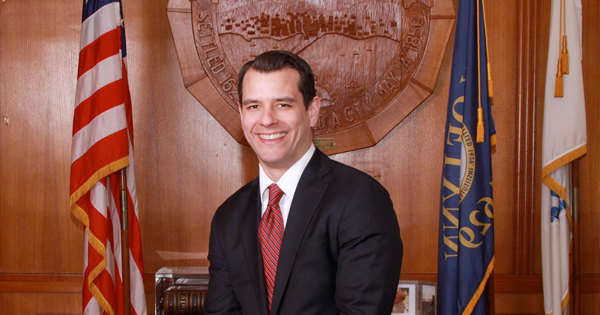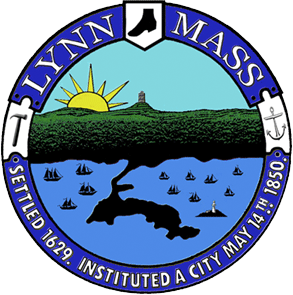
About
The Lynn Memorial City Hall and Auditorium is a large Art Deco building that defines the civic heart of Lynn, Massachusetts. The building serves three functions: first, it houses the city’s principal offices, including the mayor’s office, and the chambers of the city council. Second, it memorializes the city’s fallen in the nation’s military conflicts. Third, it houses a large public performance space with a seating capacity of over 2,000. It is located at Three City Hall Square
 Nearly 350 years ago, some settlers from nearby Salem wanted to find a less crowded area with greener pastures. They bargained with the Indians for some land known as Saugus, the place where the local Indian chiefs, the Sagamores, lived. This land originally included what are now the separate towns of Swampscott, Nahant, Saugus, and Lynnfield. In 1630, that land was incorporated as the Town of Saugus, one year after it was founded.
Nearly 350 years ago, some settlers from nearby Salem wanted to find a less crowded area with greener pastures. They bargained with the Indians for some land known as Saugus, the place where the local Indian chiefs, the Sagamores, lived. This land originally included what are now the separate towns of Swampscott, Nahant, Saugus, and Lynnfield. In 1630, that land was incorporated as the Town of Saugus, one year after it was founded.
When the first official minister, Samuel Whiting, arrived from King’s Lynn, England, the new settlers were so excited that they changed the name of their community to Lynn in 1637 in honor of him.
Although mostly an agricultural community, Lynn people were skilled in making leather shoes that were used to purchase the other necessities of life. A Quaker named Ebineezer Breed persuaded other Europeans to settle in Lynn to make the town an important shoe center of the new world. Breed also successfully convinced Congress to place a protective tariff on the shoes made in Lynn, which helped make the town the ladies’ shoe center of the world. Lynn became a city in 1850, as her population exploded. In 1892, the Lynn-based Thomson-Houston Electric Company merged with the Edison general Electric Company to form the General Electric Company.
Throughout the 19th century, Lynn was the center of religious and social change. Lynn is also known as the City of Firsts. Among the many “firsts” in Lynn history are:
1629
In 1629 the first Tannery in the US began operations in Lynn.
1847
Lynn Astronomer Maria Mitchell was the first woman inducted into the Academy of Arts and Sciences.
1875
Lydia Pinkham, a Lynn resident, was the first woman to use her image to sell a product. The Lydia Pinkham Vegetable Compound.
1888
The first Electric Trolley in the state ran from Lynn in 1888
1912
On May 30, 1912, the first Airmail Delivery in New England flew from Saugus to Lynn
1942
The first Jet Airplane Engine in the U.S. was built at Lynn’s General Electric plant in 1942.
Today, Lynn with a population of 89,050 continues to thrive and flourish as a community of hard-working people.
Lynn is rich with history, so visit one of our libraries, museums or historical society to find out more about the history of our great city.
More On Lynn
Lynn was settled by colonists from the New England Company in Salem in 1629. Early settlers relied primarily on family farming and shell fishing although an iron works was established in the city in 1643.
Leather tanning became a major industry very early on and by 1775 there were a string of tanneries along Black Marsh Brook, called Tanney Brook, to the harbor. When the Eastern Railroad was extended from Boston to Salem in 1837, it went through Lynn, encouraging growth in the shoe industry and a factory district was created as well as shoe workers’ neighborhoods of boardinghouses. The Civil War brought great prosperity to the city and further growth of the shoe factories. Even the fires of 1869 and 1889, which destroyed much of the central business district from Central Square to Broad Street, didn’t stop expansion. The gutted buildings were simply replaced by five and six story shoe factories.
While Lynn developed its major industrial capacity, handsome summer estates were being built along its shore by the middle of the 19th century. These established the city as a fashionable Boston resort area. At least a dozen large shore estates were built and other land was subdivided for increasingly suburban residential development. When Lynn Shore Drive was opened in 1910, it encouraged the development of high rises to take advantage of the shore view.
Lynn, now the largest city in Essex County, is an urban manufacturing and commercial center, densely populated and culturally diverse. Residents are proud of the city’s long history, which parallels the history of New England as a whole.
It is located in eastern Massachusetts on the northern shore of Massachusetts Bay and is bordered by Saugus and Lynnfield on the west, Peabody and Salem on the north, Swampscott and the Atlantic Ocean on the east, and Nahant and Revere on the south. Lynn is 9 miles north of Boston; 51 miles east of Worcester; 95 miles south of Portland, Maine; and 229 miles from New York City.
Narrative compiled by the Massachusetts Department of Housing and Community Development.



